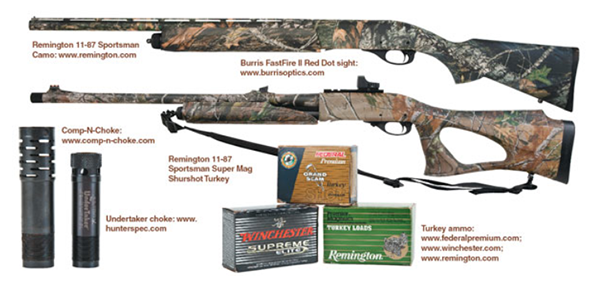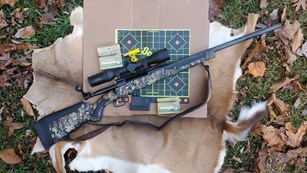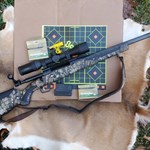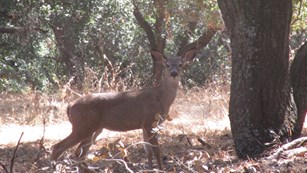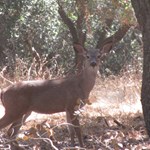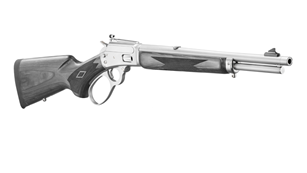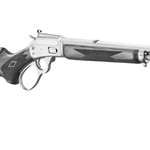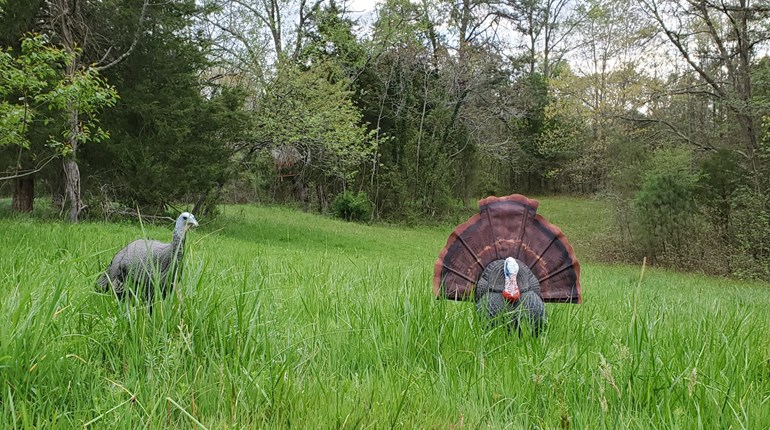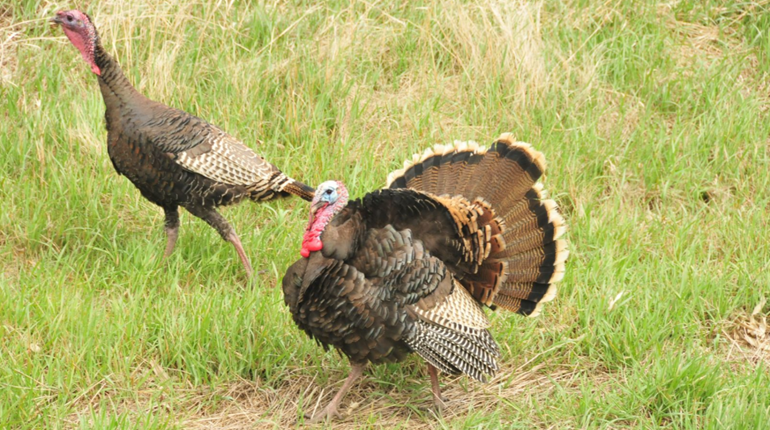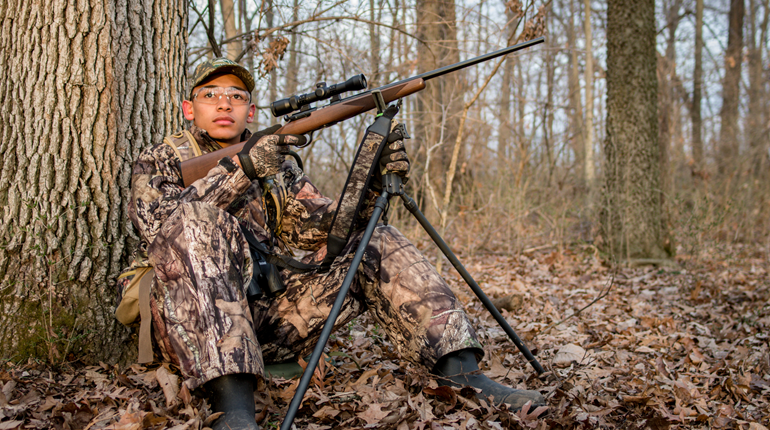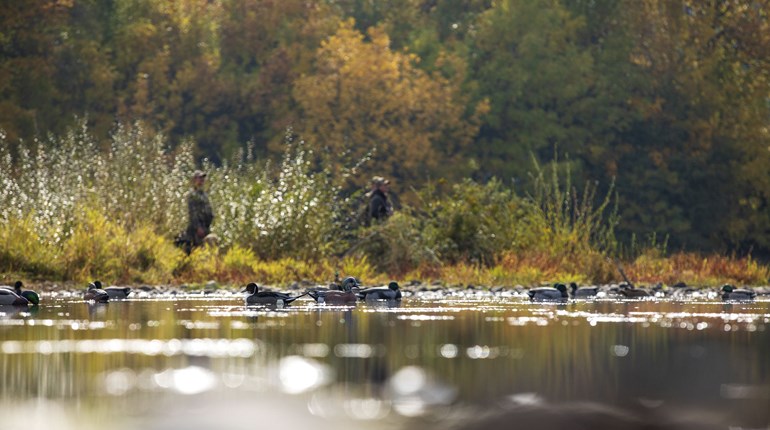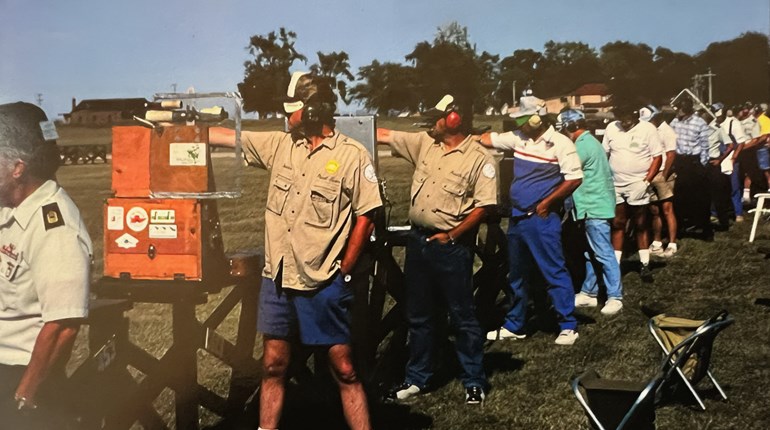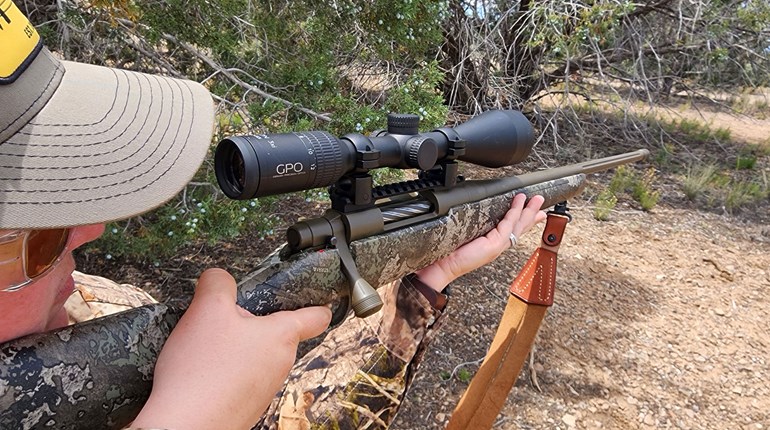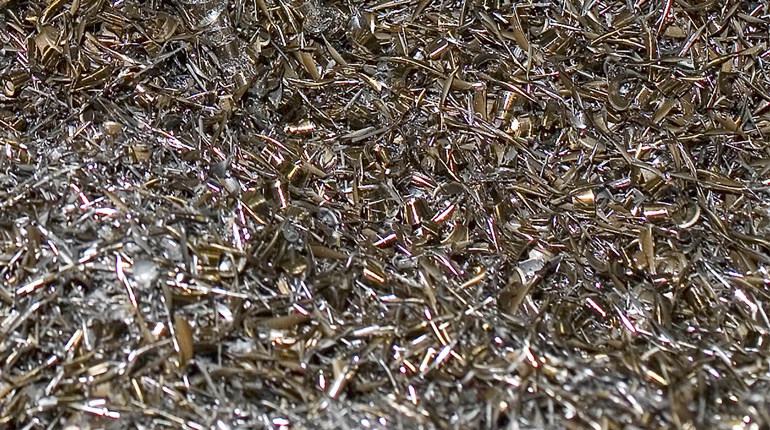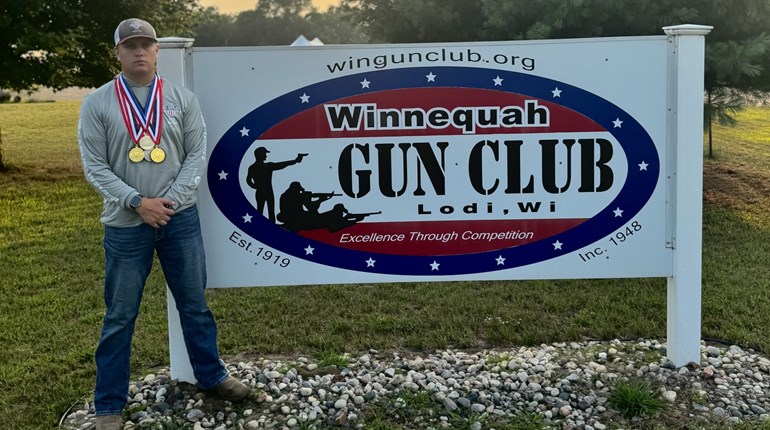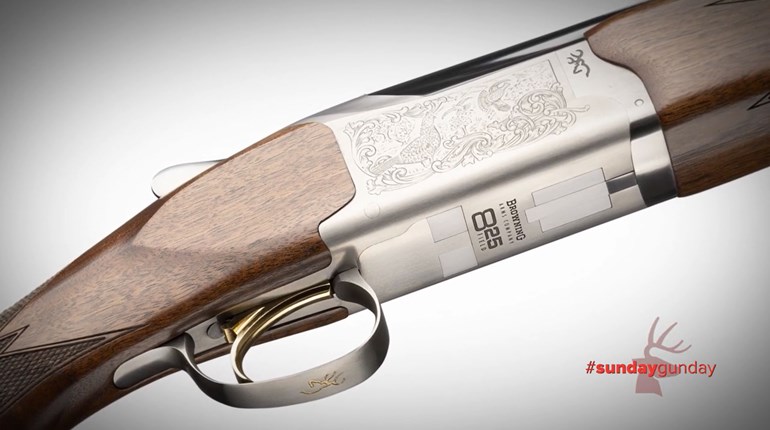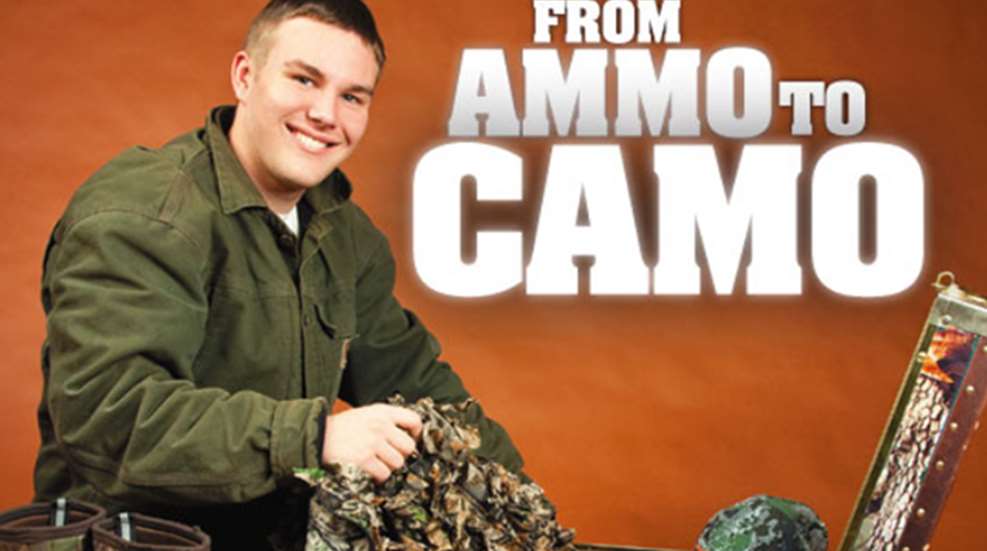
What makes turkey hunting such a classic American sport? In my opinion, it's the challenge. Turkeys are notoriously difficult for hunters to lure in and take, but it is because of this difficulty that turkey hunting is so pleasurable. Turkey hunting is also very equipment-intensive. In all or most kinds of hunting, you can opt to use a call, but in mainstream turkey hunting a call is pretty much required to lure the turkey into a trap. Because the wild turkey has excellent eyesight, effective camouflage is essential. Likewise, ammunition is very important-and manufacturers have designed ammo especially for turkeys. With all this equipment that's needed, a turkey hunter has to be smart with what he or she buys before the season. (Most of us have a fixed budget, after all!) Here are some turkey-hunting essentials I've personally tested in the field that I can recommend to you with full confidence.
Go Incognito
Arguably, the most important thing to think about when buying equipment for turkey-hunting season is camouflage. A hunter needs good camo that conceals his or her entire 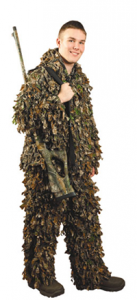 body. Many different companies make camouflage for turkey hunting. One intriguing brand is Gore-Tex Optifade. Made for Gore-Tex by retired Army Lt. Col. Tim O'Neill, Ph.D., regarded as the "Father of Digital Camouflage," it's a water-resistant digital camo made using scientific studies into the eyesight of turkeys and other game animals. The pattern was well-planned, incorporating "micro-patterns," small-scale patterns that are based on the eyesight of game animals and help you to fade into the background; and "macro-patterns," large-scale patterns which fragment the image of your body, making your figure almost impossible for most animals to make out. Lt. Col. O'Neill bases his micro- and macro-patterns off of the natural camouflage used by leopards and tigers. To see how it works, go to www.optifade.com and click "How It Works." On that page is a game called "Spot the Hunter." (I tried it and lost every time.)
body. Many different companies make camouflage for turkey hunting. One intriguing brand is Gore-Tex Optifade. Made for Gore-Tex by retired Army Lt. Col. Tim O'Neill, Ph.D., regarded as the "Father of Digital Camouflage," it's a water-resistant digital camo made using scientific studies into the eyesight of turkeys and other game animals. The pattern was well-planned, incorporating "micro-patterns," small-scale patterns that are based on the eyesight of game animals and help you to fade into the background; and "macro-patterns," large-scale patterns which fragment the image of your body, making your figure almost impossible for most animals to make out. Lt. Col. O'Neill bases his micro- and macro-patterns off of the natural camouflage used by leopards and tigers. To see how it works, go to www.optifade.com and click "How It Works." On that page is a game called "Spot the Hunter." (I tried it and lost every time.)
Another personal favorite of mine: the "Ghillie suit." Originally made for field snipers in the British Army, the Ghillie suit is a suit that fully conceals the body, limbs and head, and has strips of cloth with a camo pattern hanging off of it. The overall effect is one that makes you look like a bush, and in the woods, invisible. There are many special kinds of Ghillie suits, and many companies make them nowadays. My own experience with them comes from my use of the Cabela's Total Concealment System suit. One of Cabela's many Ghillie suit brands, the TCS suit comes with pants, a hoodie, a hat and a facemask; it's extremely lightweight and breathable, perfect for hot or lukewarm weather. However, there are also many heavier brands for colder weather. The TCS suit comes in several different patterns: Seclusion 3D, Mossy Oak, New Break-Up and Mossy Oak Brush. Keep in mind the environment you're hunting when choosing a pattern. I think in most cases, Seclusion 3D, Cabela's signature pattern, would suffice. It's the kind I use and it's worked just fine for me.
Another thing to think about is camo boots. If you're in a dry area, you may be able to get away with wrapping a camo pattern over your regular shoes. If the area is wet, I can personally recommend Muck Boots Woody Sport. They've gotten me through some serious conditions in the past.
In-Vested
Something important to consider is what you're going to do with all the gear needed for your hunt. You can't carry all of it in your hands, so the thing to do is to buy a turkey vest or belt, two extremely efficient items that will help you organize your stuff. Many outdoors outfitting companies make turkey vests or belts. Cabela's offers several very high-quality turkey vests and belts, including some from Beard Buster. The Beard Buster belt has one 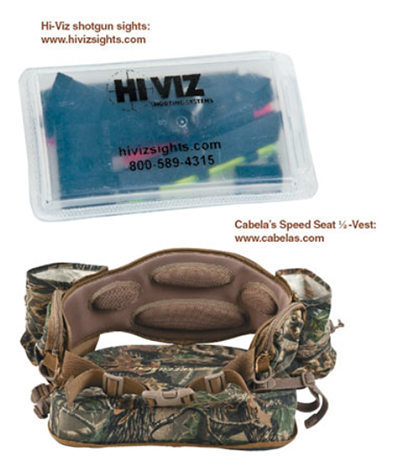 large zip-open pocket that can easily contain several calls, gloves, facemasks and other miscellaneous items. It has several specialty pockets as well, including one for snugly carrying two extra shells, two for diaphragm calls that help to keep them clean, and a water bottle pouch. It also includes a padded seat to allow you to sit comfortably. The Beard Buster also comes in a vest version, which includes a compartment for carrying your harvested tom. This compartment includes orange strips that can be pulled out of the compartment to alert other hunters to your location, an especially important safety feature when carrying a bird. This is truly one of the most efficient ways to organize your gear for turkey season.
large zip-open pocket that can easily contain several calls, gloves, facemasks and other miscellaneous items. It has several specialty pockets as well, including one for snugly carrying two extra shells, two for diaphragm calls that help to keep them clean, and a water bottle pouch. It also includes a padded seat to allow you to sit comfortably. The Beard Buster also comes in a vest version, which includes a compartment for carrying your harvested tom. This compartment includes orange strips that can be pulled out of the compartment to alert other hunters to your location, an especially important safety feature when carrying a bird. This is truly one of the most efficient ways to organize your gear for turkey season.
Another product that works well is the Ultimate Waist Pack by Hunter's Specialties. It actually has 15 total compartments: specialty compartments for pan calls, diaphragm calls, strikers, shotgun shells, your license, an external box call holster and other hunting gear. It is pretty inexpensive but still retains much of the efficiency of a full-blown vest. The product is made of 2-ply Quiet Cloth, a heavy-duty material, and comes in Realtree APG HD camo.
Paging Tom...
Calls are also crucial to turkey hunting. The Native Americans used the wing bone of a 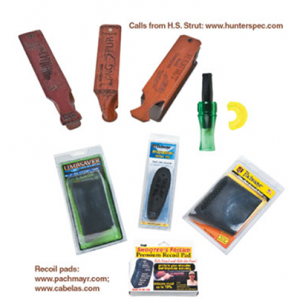 turkey itself as a call. Today, there are several types of calls for turkey hunting. Box calls, pot-and-peg calls, diaphragm calls, push-pin calls...and even some calls that sound like different animals. Male turkeys in mating season will often gobble at non-turkey noises. One of the better ways to locate turkeys is actually a crow call. The crow call is useful as a turkey locating call, because it's loud and the sound carries for a long way. Turkeys far away will hear it and gobble at it. I use a very loud kind of crow call called the Hammerin. Turkeys will only gobble at crows; the crow call won't lure them in. For that you need a turkey call.
turkey itself as a call. Today, there are several types of calls for turkey hunting. Box calls, pot-and-peg calls, diaphragm calls, push-pin calls...and even some calls that sound like different animals. Male turkeys in mating season will often gobble at non-turkey noises. One of the better ways to locate turkeys is actually a crow call. The crow call is useful as a turkey locating call, because it's loud and the sound carries for a long way. Turkeys far away will hear it and gobble at it. I use a very loud kind of crow call called the Hammerin. Turkeys will only gobble at crows; the crow call won't lure them in. For that you need a turkey call.
One type of turkey call is the box call. The box call has a hinged lid, is made of wood, and when you scrape the lid across the rest of the box it makes a sound like a female turkey. In experienced hands, the box call can be made to sound like a male gobbler as well, luring jealous birds to you. A few good brands of box calls are the Primos Heartbreaker, the H.S. Strut Natural and the Knight and Hale Long Spur.
Another kind of friction call is the slate or pot-and-peg call. This type of call is made of wood and many other materials that, when rubbed together, will make a squeaking noise similar to that of the box call. Many companies make these calls, including H.S. Strut, which makes the Ring Zone; and Knight & Hale, which makes the Ol' Yeller.
One of the only types of turkey calls not based on friction is the diaphragm call. A diaphragm call is a semi-circular call made of latex and tape. The diaphragm call is put on the roof of the mouth so that your tongue is pushing it upwards, then you pass air through it to make noise. In expert hands, it sounds the most like a turkey. It may take a bit of experimentation to find out how to use it properly, but it can work wonders for you.
The easiest kind of call to use, the push-pin call, is another friction call, and it only takes about two minutes to get the hang of it. It's wooden and box-shaped, like the box call, but instead of a hinged lid, it has one open side and uses a wooden pin that you push through a hole, which on the other side is attached to a material that scrapes against the box and makes a sound like a turkey. The call itself does all the hard work. It doesn't make as realistic a sound as the other calls, but chances are the turkey's not going to notice. You can lure in a turkey with this call just as easily as any of the others.
Gunning For Toms
Now for the unarguably most vital piece of the hunt: the gun. Most turkey hunting is done using a shotgun and special turkey ammo (more on that later). The right gun is an important part of your turkey hunting decision, but that mostly comes down to what kind of gauge you want to use. Twelve gauge and 20 gauge are the two most common sizes used for turkey hunting. The key here is that you don't have to go out and buy a new scattergun just to hunt turkeys. You can rig up most any wingshooting gun to be a top-rate gobbler cruncher with a few easy modifications.
One of these possible modifications is a recoil pad. A recoil pad is a soft rubber pad that slips over the butt of the gun to reduce recoil drastically. One kind, the Shooter's Friend recoil pad, can reduce recoil by up to 70 percent. The Shooter's Friend is also guaranteed to stay soft and rubbery, and not go brittle with age or harden in the cold. Another brand of recoil pad, also available from Cabela's, is the Sims LimbSaver. The LimbSaver is made of the same NAVCOM material used to absorb shock and reduce vibration on high-energy compound bows. It also uses Decay Time Modification (DTM) to reduce shock and vibration by up to 50 percent.
A factor to consider with a recoil pad is that it gives the gun a bit longer length of pull. This might be a problem when shooting flying targets, but since turkey shotguns are deliberately aimed, it won't be as bad. It might even be a boon: If you have a youth shotgun you would like to continue using, one that is getting a bit too small for you, just slip on a recoil pad and-voila!-the fit is now just about perfect.
You might also consider adding a sight. Shotguns made primarily for hunting flying birds use a bead sight. There are better ways to aim at turkeys, and several kinds of sights are made specifically for turkey hunting. One of these is the Burris FastFire II Red Dot reflex sight. The red dot sight is a contraption that includes a lens near the barrel, where the rear sight on a rifle would be. It also includes a red laser light that shines into the lens. When you look into the lens, you see a red dot showing you where the middle of your shot cloud will be. It is a perfect sight for turkey hunting, and is very fun to use. Another great option is Hi-Viz sights. These resin sights are "light-gathering," using ambient light to help get a good sight picture. That means they don't need a battery to work.
The last adjustment to the shotgun is perhaps the one you should take most seriously. Choke tubes can be put into shotguns to control the shot pattern. Chokes can either constrict or expand the shot depending on what kind you use. There is Full choke, which tightly restricts the pellets into a 30-inch circle at 40 yards. However, for the close ranges involved in turkey hunting, you will want to use a Super-Full or Extra-Full choke, which is perfect for headshots on turkeys. These kinds of chokes offer the most constricted and densest patterns, constricting shots by 75 percent or more over non-choked barrels. One great brand of Super-Full choke is the Undertaker by Hunter's Specialties. It is easy to install and extra-long for maximum performance.
Hard Hitting
Last, but not least, is ammo. As shotgun ammo goes, this is the heavy-duty stuff. Turkey ammo has the heaviest charge weight and most shot pellets of all shotgun shells. A few good types, representing the three main ammunition companies, are (for 12 gauge) the Winchester Xtended Range and the heavier Remington Premier Magnum Turkey Loads; and (for 20 gauge) the Federal Premium Grand Slam. All will do the job if used right.
The Upshot
Getting your priorities straight is key. The questions you have to ask yourself are: What do I need, what do I want, and what can I afford? Once you answer these questions, you should be able to hunt turkeys to the best of your abilities and have a great time while doing it. Best of luck in the upcoming turkey season. God bless and protect.